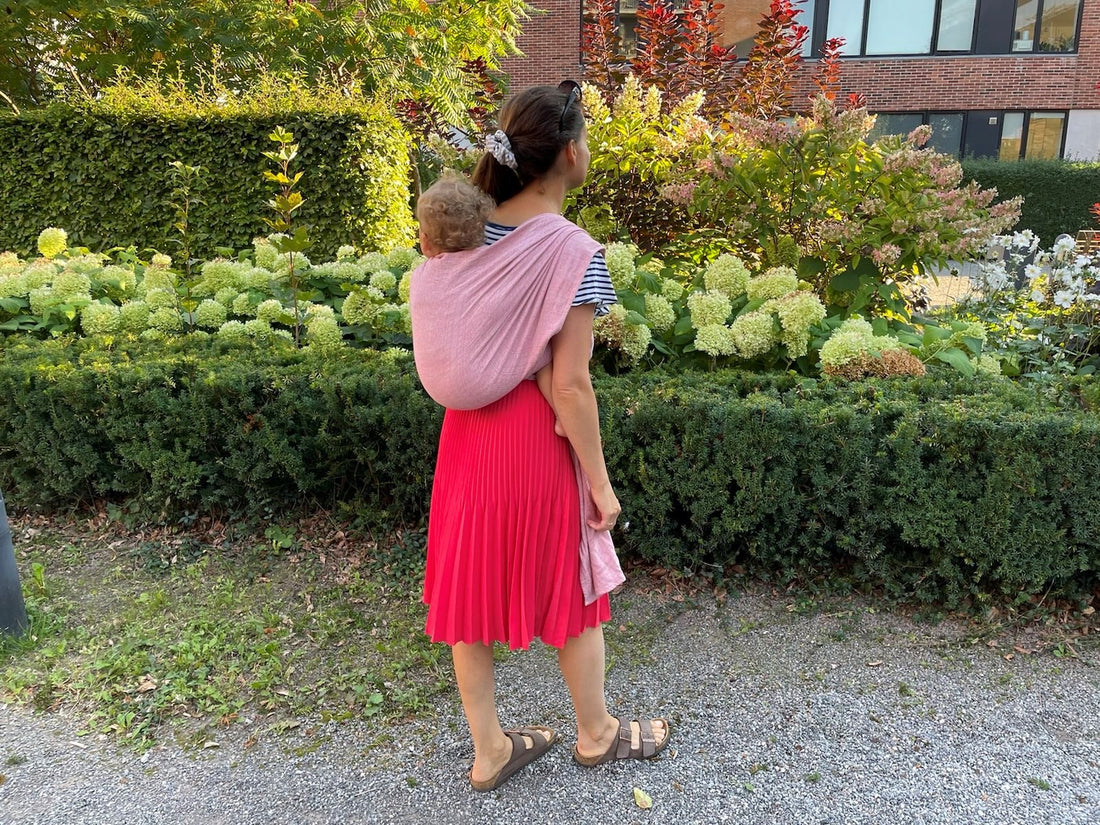
Safety in slings
Share
Before wearing your baby for the first time make sure to read and understand the safety rules. First trials might be scary, but if you follow the rules and check on your baby regularly, you will be able to carry them safely. After a while the wrap will feel like a second skin and you will be able to immediately spot if something is not right. On this page you will find the internationally recognized rules of safe babywearing as well as my own guide of safe back carrying.
TICKS
The UK Sling Consortium created a list of five rules of safe babywearing also known as TICKS. TICKS is an acronym that will help you remember positioning checkpoints.
Click on the image below to access the full and printable version of TICKS.

BACK carrying rules
Back carrying is often discovered by parents once they get the hang of the front carry. While it is possible and safe to wear a newborn on the back, most of us prefer to wait until the baby can at least control their head well, before we dedide to shift them from front to back. It's no wonder becase back carrying is special and even TICKS rules can't help us figure out if we wrap correctly (e.g. your baby won't be in view at all times or close enough to kiss, at least not by you).
Below you can see my personal guide of safe back carrying in any type of wrap or carrier, which I hope is practical and easy to remember.
Bring to back correctly
Ensuring the baby is correctly put on your back is half of the success. Any new back carry might be tricky because you can't easily see what's happening on your back. Take your time to practice with a doll or teddy before putting your baby in and out of the wrap. For the first few trials it is recommended to kneel in the middle of the bed and ask your partner to spot check.
Airflow
As in TICKS, you need to ensure the baby's chin is off the chest (at least one finger width) and their airways are not restricted. The fresh air should circulate freely around the baby's face and the fabric of a sling or carrier should never cover it.
Close fit
Make sure that the baby is tightly wrapped and as high as your carrier allows, with their tummy and chest against your back. If you use a wrap, you baby shoud be able to see just above your shoulder. Baby’s back should be fully supported and in a natural curled position with their knees higher than the bum. Ensure there is no loose fabric anywhere.
Keep the contact
Because you can’t keep eye contact with your baby, talk to them and check regularly if they are comfortable. Ask your partner to check their wellbeing too. If you are walking alone or are carrying a smaller baby who cannot communicate yet - invest in a rear view mirror or use your smartphone in a selfie mode to check if they are correctly positioned and well at all times.
